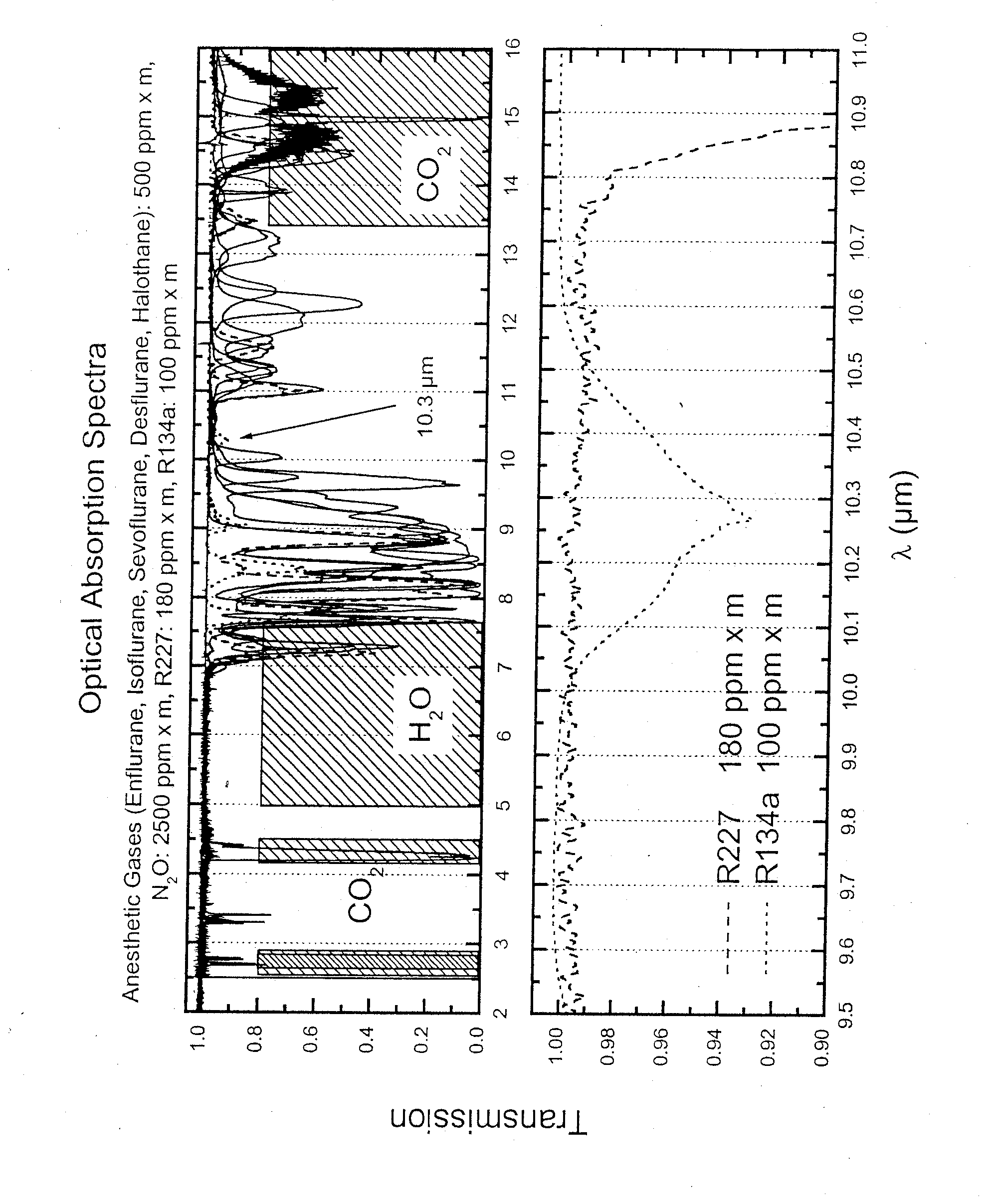Use of 1,1,1,2-tetrafluoroethane for measuring lung function, especially for determining the functional residual capacity (FRC) of the lungs
a technology of tetrafluoroethane and tetrafluoroethane, which is applied in the direction of application, diagnostic recording/measuring, aerosol delivery, etc., can solve the problems of high purchase price, a great measuring technical effort, and the general great technical effort with which the trace gas used is filled and applied. , to achieve the effect of low cos
- Summary
- Abstract
- Description
- Claims
- Application Information
AI Technical Summary
Benefits of technology
Problems solved by technology
Method used
Image
Examples
Embodiment Construction
[0014] Referring to the drawings in particular, as it can be recognized from the only Figure 1,1,1,2-tetrafluoroethane has an optical absorption line at 10.3 μm. With this the cross sensitivity to anesthetics occurring during mechanical respiration during anesthesia and to laughing gas (N2O) is extensively reduced. The only Figure also shows the absorption spectra of the different known anesthetic gases (enflurane, isoflurane, sevoflurane, desflurane, halothane) and laughing gas (N2O) are plotted over the wavelength λ in the upper part. The absorption spectra of the fluorohydrocarbons 1,1,1,2-tetrafluoroethane (“R 134a”) as well as 1,1,1,2,3,3,3-heptafluoropropane (“R 227”) are shown in the lower part. It is seen from the Figure that when “R 134a” is used, infrared concentration measurements are readily possible on the basis of the characteristic absorption peak at 10.3 μm even in the presence of volatile anesthetics and laughing gas (N2O), whereas this is not possible for “R 227.”
[...
PUM
| Property | Measurement | Unit |
|---|---|---|
| functional residual capacity | aaaaa | aaaaa |
| concentration | aaaaa | aaaaa |
| concentrations | aaaaa | aaaaa |
Abstract
Description
Claims
Application Information
 Login to View More
Login to View More - R&D
- Intellectual Property
- Life Sciences
- Materials
- Tech Scout
- Unparalleled Data Quality
- Higher Quality Content
- 60% Fewer Hallucinations
Browse by: Latest US Patents, China's latest patents, Technical Efficacy Thesaurus, Application Domain, Technology Topic, Popular Technical Reports.
© 2025 PatSnap. All rights reserved.Legal|Privacy policy|Modern Slavery Act Transparency Statement|Sitemap|About US| Contact US: help@patsnap.com



